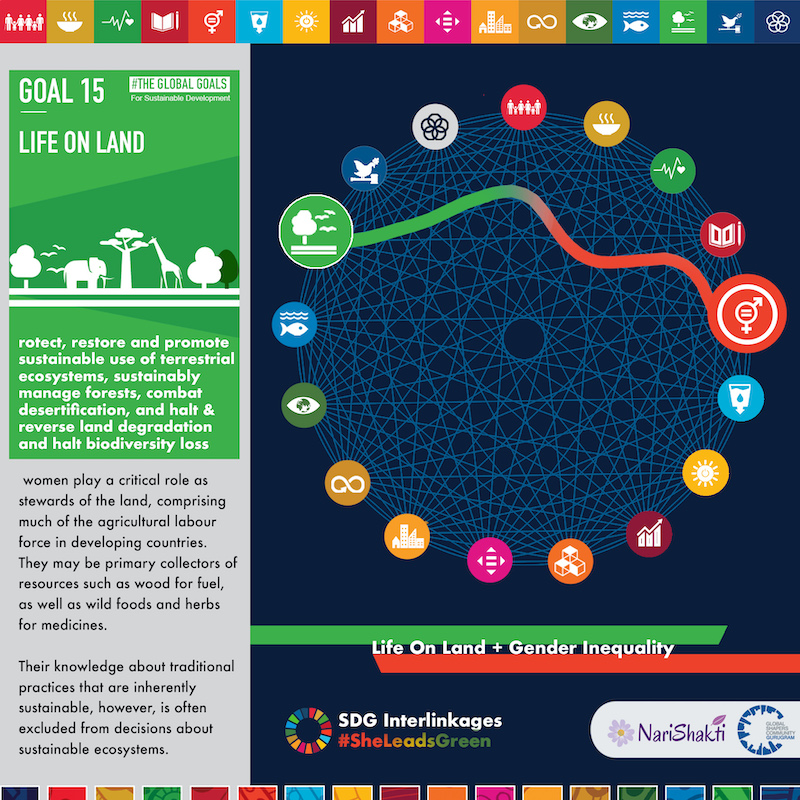
Gender parity for life on land (SDG 15)

Why do we need to look at life on land from a gender lens?
- Environmental degradation has more intense effects on women. “Household” based, environmentally relevant decisions are negotiated, unequally between women and men.
- Women play a significant role in ensuring water and fuel supplies in developing countries, and because of their dependency on forests for fuel, fodder and food, deforestation and land degradation can affect them foremost.
- Deforestation and the extension of mass farming can thus reduce water supplies, forcing women to walk far to collect water for household use.
- Poor rural women are highly dependent on common pool resources, the depletion of which affects them severely. They are primary collectors of wood for fuel, and wild foods and herbs for medicines.
How is life on land and gender-linked?
There are 12 targets and 14 indicators to achieve SDG 15. None of the indicators are gender-specific.
- Women play a critical role in management of the land and constitute much of the agricultural labour force in developing countries.
- In most contexts, women lack direct, uncontested rights to the land.
- The limited ownership of land reduces their capacity to make decisions about efficient use of land and its conservation.
- Women farmers are disproportionately affected by dispossession because of their unequal access and control over land and productive assets, coupled with limited mobility and decision-making power in the household and the community and greater obstacles in accessing justice to defend their land rights.
What outcomes can we achieve in SDG 15 if we reach gender parity?
- Women possess inherently sustainable knowledge about traditional practices which is often excluded from important decisions about sustainable ecosystems.
- It affects the prospects for sustainable use of the ecosystem which is impacted by gender equality in access to land, livelihoods, and natural resources.
- Indigenous women play an essential role in protection of biodiversity and sustenance of knowledge about their lands and territories.
- Women, and indigenous women, need to be involved in decision-making at all levels, as essential players in preservation of the environment.
- When women make up a critical mass of between 25 and 35 percent of the people in community forestry, their impact is felt in regeneration and improvement of forest conditions.
References


